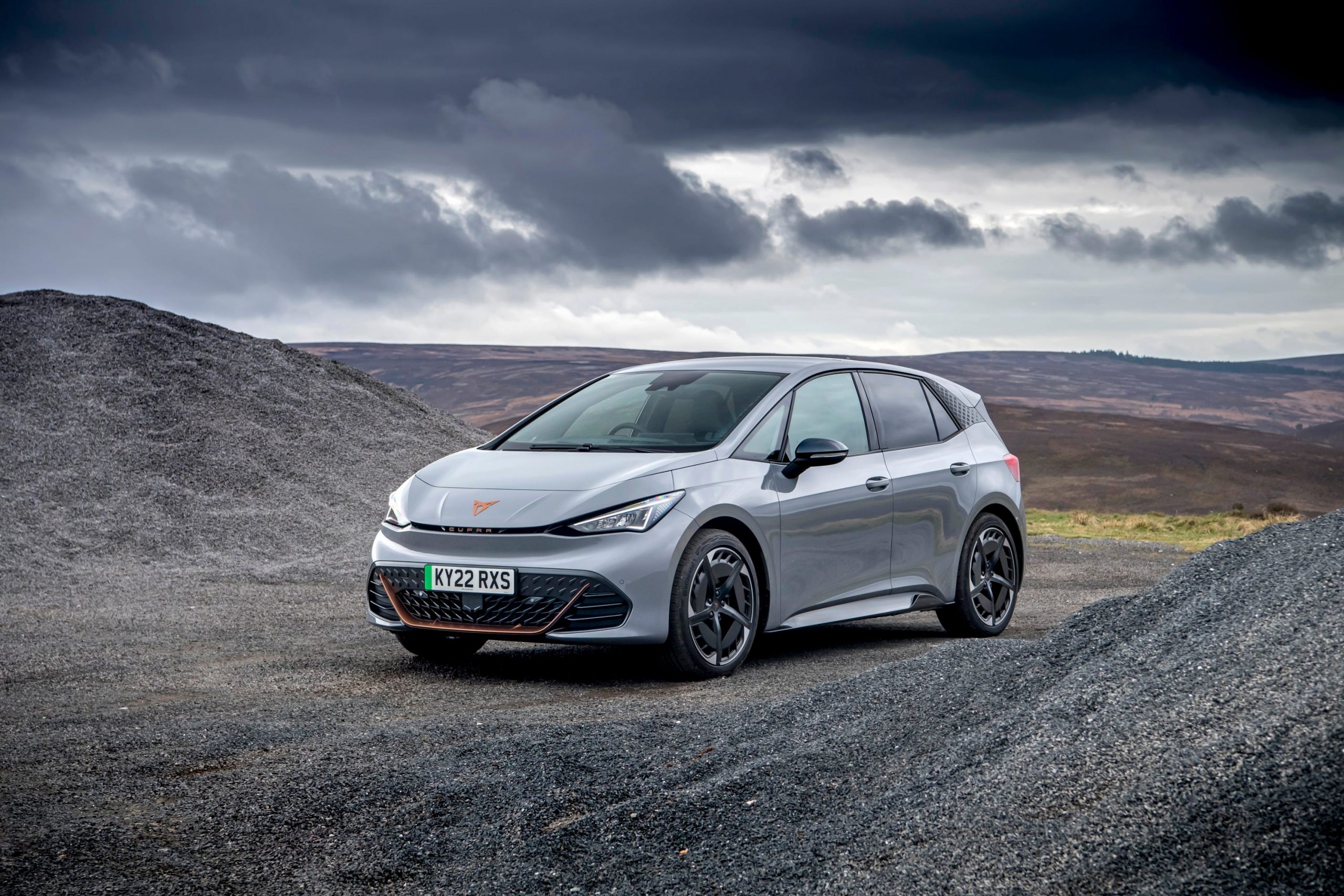The Volkswagen GTE combines petrol and electric power, but how does this pairing feel on the road? JACK EVANS finds out.
Though Volkswagen is on a mission to create as many EVs as possible, it hasn’t forgotten about providing electric assistance to some of its more mainstream models. Such is the case of the new Volkswagen Golf GTE.
The previous-generation car proved to be a hit with business users, who liked its combination of neat handling and rock-bottom emissions figures. So you can see why Volkswagen has revived the idea for the latest eight-generation Golf. With a larger battery than before, this could be an even bigger success than the older GTE. Let’s find out if that’s the case.
As with other plug-in hybrids within the Volkswagen Group stable, the GTE combines a compact turbocharged petrol engine with an electric motor and battery for tip-top efficiency and fuel economy. But save for this fuel-sipping powertrain, the GTE is largely interchangeable with the GTI and GTD in terms of looks, save for some electric blue accents which highlight the car’s eco-credentials.
Inside, we’ve got the screen-heavy layout that we’ve already seen on the latest ‘standard’ Golf, with all manner of displays ensuring that the GTE feels as cutting-edge as possible.
The powertrain of the GTE combines a 1.4-litre turbocharged petrol engine with a 109bhp electric motor. In total, you get 242bhp and 400Nm. The battery has increased in size over the older GTE, now 13kWh instead of 8.7kWh, which means that the GTE arrives with a claimed electric-only range of 40 miles. A full charge with a 3.6kW charger will take three hours and 40 minutes, too.
Now the eagle-eyed among you might notice that the GTE’s power figure matches that of the regular petrol GTI, while there’s a decent slug more torque, too. However, because of the additional battery weight, the GTE fails to match the GTI’s 0-60mph time – scoring 6.4 seconds rather than the petrol’s six seconds dead. However, with CO2 emissions of just 26g/km and a claimed consumption figure of 246.1mpg, the GTE definitely aces the GTI in the economy stakes.
The GTE sets off in characteristically silent fashion (as you’d expect from a PHEV), with the engine barely required to intervene in all but the most aggressive stabs of the throttle. With a range of 40 miles – or just over 30 during our chilly winter test drive – you’ve got more than enough in the electric tank for shorter trips. Ask more of the powertrain and the engine will come into play, combining with the electric motor to provide decent enough performance.
Once you’re out of juice, however, the GTE does struggle to give the sort of pace you’d expect from a car like this. The plucky 1.4-litre engine sounds surprisingly good, mind you, but it’s left with a lot on its plate when tasked with lugging the heavier-than-usual Golf around. Thankfully, it’s a car which is adept at topping up its batteries through regenerative braking and during our test route we were able to add around 13 miles of range through this process alone.

The steering has a good weight to it, though the suspension feels a touch too firm, though the added spring rate helps keep the GTE flat and composed through the bends.
The GTE’s looks are, as we mentioned earlier, close to identical to those of the GTI and GTD. This will undoubtedly prove popular with many drivers, as you’re able to get the aesthetics of the sportiest model in the range yet with a fuel-sipping powertrain. The GTE isn’t a car which screams about its electrified underpinnings, and though its blue logos and highlights are noticeable, they certainly don’t stand out too much.
In our eyes, the sleek headlights of the latest-generation Golf give the car a far more purposeful look than before, while the full-width light bar at the front of the GTE gives it a particularly high-tech design.
With screens and dials aplenty in the cabin of the GTE, it can feel a touch alien to begin with. The lack of physical buttons takes some getting used to, with the majority of heating and ventilation controls accessed via the central touchscreen. Though for the most part this isn’t an issue, during the depths of winter when you want to get the blowers on full and the heated seats on, having to do this through a screen can take slightly longer than you want it to.
Space in the rear of the car is good enough, though boot space has taken a significant knock as a result of the fitment of those batteries. It’s down to 273 litres in fact, falling considerably from the regular GTI’s 360 litres.
As a Volkswagen car wearing a ‘GT’ badge, the GTE arrives with plenty of equipment fitted as standard. You get a 10-inch central infotainment screen which includes both Apple CarPlay and Android Auto, while this is complemented by a wide display in place of the conventional dials. We struggled at times to access the finer settings of the system; trying to adjust the height of the heads-up display proved a real task.
The Volkswagen Golf GTE represents an attractive take on the performance plug-in hybrid. It might not be able to match the petrol-only GTI for outright thrills, but for those after a ‘hotter’ hatchback which won’t break the bank when it comes to running costs, it’ll prove a worthy option. Particularly for company car owners who want a car that brings a decent slug of performance but don’t want to push the boat out when it comes to tax, the GTE could be right on the money. Add in the GTE’s strong exterior styling and tech-laden interior, and it’s likely that its lack of an edge when it comes to handling and performance won’t prove to be a stumbling block for many buyers.
















